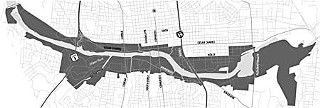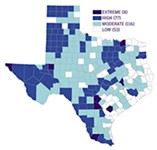Protecting the Waterfront (Part 1)
Looking Back to the Future
By Katherine Gregor, Fri., April 24, 2009

We hope our recommendations will help move Austin further toward a mix of tranquil and vibrant spaces where people of every socioeconomic status can enjoy their right as citizens to miles and miles of this precious public waterfront that is the heart of our city.
– Waterfront Overlay Task Force recommendations, minority report
A kayak-paddle salute to the hardworking volunteer members of the Waterfront Overlay Task Force and city staff. The task force recommendations, based on nine months of tedious work, have resulted in a new draft ordinance governing the Lady Bird Lake shoreline that advances the public good while completely pleasing no one. In Austin, that's a splashing success!
The revised Waterfront Overlay Ordinance, set for council action April 30, both rights a historical wrong and sets the stage for enlightened urban planning. The latter process needs to supply the missing piece: a density-bonus system under which developers can earn greater height and entitlements by providing community benefits.
In correcting past wrongs, the ordinance does two important things. First, it reinstates the original 1986 height limits for new Waterfront Overlay district development – heights vary by subdistrict but max out at 96 feet – that were eliminated in a "plain English" rewrite of the overlay code in 1999. Because the limits were stricken by staff without due public process – possibly illegally, in violation of the Open Meetings Act – it's both just and politic of council to reinstate them in full. (A lawsuit against the city by SaveTownLake.org over the rewrite's legality, although it did not prevail, did prod council to establish the task force to "evaluate potential inconsistencies and ambiguities" in the existing ordinance.) And it was the controversial proposed high-rise condo development at 222/300 E. Riverside that started all this rallying 'round the lake; in April 2008, SaveTownLake.org and South River City Citizens finally brokered a "density bonus" agreement with its developer, CWS Capital Partners. (Like the Gotham before it, the bust could mean this lightning-rod project may never actually rise.)
Reinstating the lost height limits cleans the slate and earns public trust by demonstrating that council – led in this case by Mike Martinez and Lee Leffingwell – will stand up against development and private landowner interests for the greater public good. Now, the city and community must draw a vision for the future of the waterfront.
The Good Old Goals
The second correction of a past mistake: As amended, the Waterfront Overlay Ordinance now explicitly states a purpose "to help further the goals of the Town Lake Corridor Study," a remarkably enlightened 1985 document. Those goals fall into three categories: environmental protection, increased public access and ownership of shoreline land, and urban planning and design (see "Town Lake Corridor Study Goals," below). On the first, Austin has done pretty well. On the second two, the 1985 study and the Waterfront Overlay Ordinance it spawned have been ineffective due to lack of implementation. (Thus, for example, the plan now to build an expensive boardwalk over the water, since we don't own the land.) The study ended with a strong section on implementation – an excellent list of "action priorities" that remain in need of action nearly a quarter-century later. ("Pursue a commitment from the University of Texas to preserve the Brackenridge Tract on the Town Lake waterfront in a natural condition, and to provide for public access along the shoreline.")
The revised ordinance going to council will be stronger if it directs the city manager to immediately review and implement the study's still-relevant action priorities. (It also needs to solve the still-problematic Planned Unit Development exception.) At a minimum, those recommended action steps should be re-read by every member of council and the city management executive team before the city optimistically launches a new Waterfront Planning Advisory Board. Austin has failed for so long to act on these identified "community value" priorities – why?
A poignant passage from the 1985 study preface: "Roberta Crenshaw, the uncontested grande dame of Town Lake protection and beautification, drilled us thoroughly on the 30-year history of efforts like ours, warning us that previous plans – particularly a 1968 'Town Lake Comprehensive Plan' – have died on the shelf for want of action."
"Protecting the Waterfront, Part II: Planning Forward" will follow in Developing Stories next week.
Town Lake Corridor Study Goals
Environmental protection:
• Reduce urban runoff into the Colorado River.
• Improve and protect city creeks.
• Revegetate the shoreline.
• Require better shoreline maintenance.
• Require environmental impact studies for new developments.
Public waterfront:
• Increase public control and access of shoreline land.
• Acquire additional parkland and greenbelts.
• Integrate parkland acquisition with road and infrastructure planning.
• Secure additional public access easements along the shoreline.
Urban design and planning:
• Encourage appropriate mixed-use and residential development.
• Ensure compatible land uses and a harmonious transition from parkland to the built environment.
• Promote cooperative efforts to better realize the potential of the city's waterfront.
Draft Waterfront Overlay Ordinance: Public Presentations and Hearings
Waterfront Overlay Task Force meeting: Friday, April 24, 9am; City Hall, 301 W. Second, Room 1027
Parks and Recreation Board meeting: Tuesday, April 28, 6pm; City Hall, Room 1101
Planning Commission meeting: Tuesday, April 28, 6pm; City Hall, Room 1001
City Council meeting: Thursday, April 30; City Hall, Council Chambers
(See www.cityofaustin.org/agenda for more info.)
Got something to say on the subject? Send a letter to the editor.








